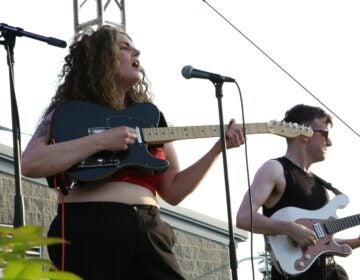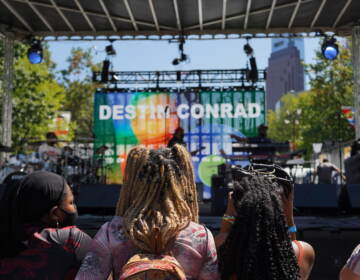Philly composer writes a series of jazz and blues songs inspired by Tacony Creek
Randy Gibson’s seven-song Tacony Creek Suite responds to George Floyd, the coronavirus pandemic and its titular water source.
Listen 3:33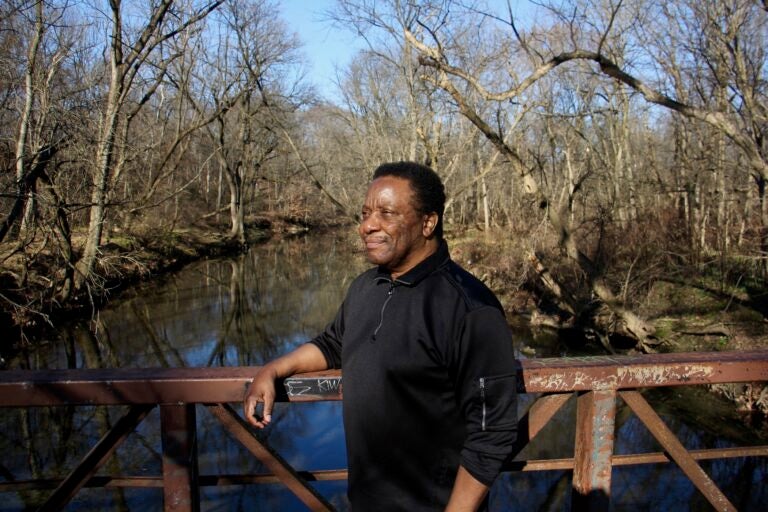
Composer Randy Gibson walked the trails of Tacony Creek Park and recorded his responses as a suite of songs. (Emma Lee/WHYY)
In the summer of 2019, composer Randy Gibson took a stroll through Philadelphia’s Tacony Creek Park with his wife, Wilhelmina. Although Gibson has been operating his own music school for 25 years nearby in Olney, he wasn’t familiar with the creek or the park until the Olney Culture Lab asked him to write music in response to it.
His set of seven songs, the Tacony Creek Suite being released this month, is an ode to the placid and turbulent moods of the creek, and to the oasis of tranquility it could become.
“When I came through here about a year and a half ago, there were still abandoned cars in the creek itself,” he said.
During a recent revisit to Tacony Creek Park, the water ran clear — sans old cars — and with little evidence of short-dumped trash. Even amid the winter trees, when branches bare of leaves cannot hide anything, garbage appeared to be at a minimum. As he crossed a bridge over the creek, moving deeper into the park, noise from the heavy traffic on Crescentville Road at Cheltenham Avenue faded, although it was only about 50 yards away.
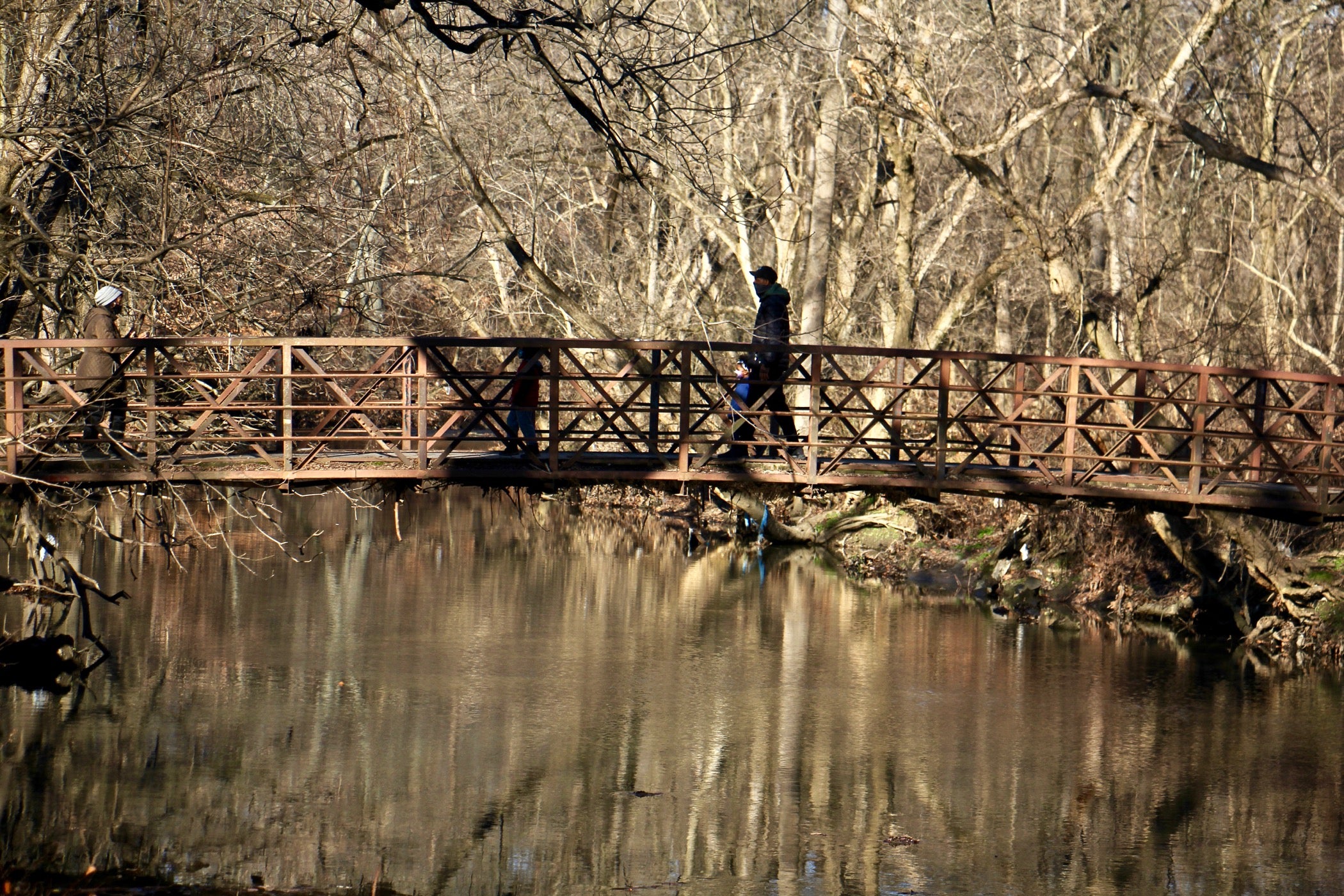
One of the songs Gibson wrote and performed is blues-structured jazz, “Could It B?” The title has a double meaning.
“In the history of blues, nobody writes in the key of B,” said Gibson. “So I did this in the key of B, which is a very beautiful key. I don’t know why it’s been passed over. Search your history, you won’t find blues in B.”
It’s also an aspirational song.
“If we can reach certain plateaus, you first must believe that you can get to certain levels,” he said. “I see [the park] as it is now, it’s come a ways and it’s got a ways to go, but I’m already mentally walking in it. You have to prepare yourself for the good to come.”
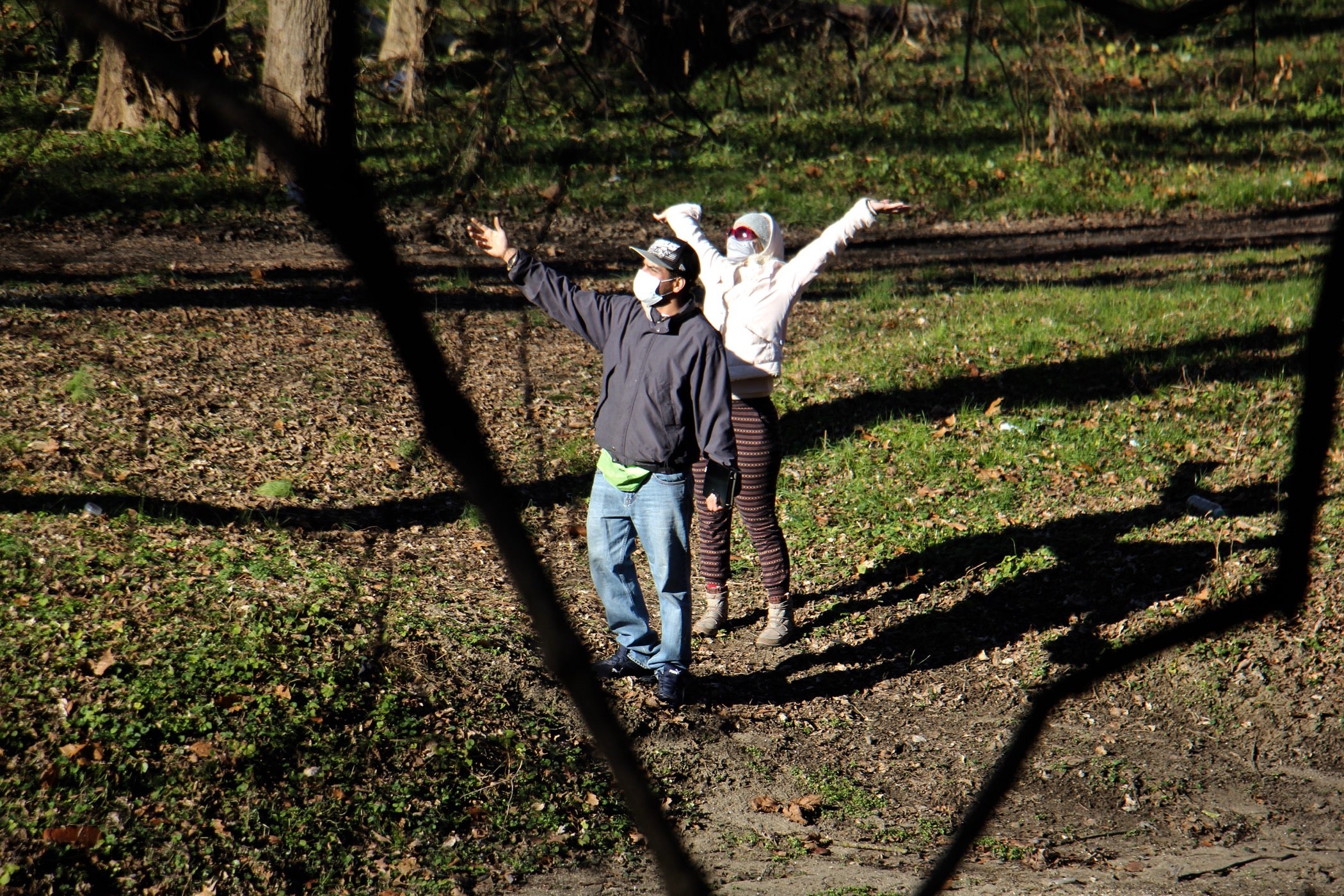
Gibson, a longtime composer, performer and teacher, has taught generations of musicians in Philadelphia, including singer Jazmine Sullivan and Kamal Gray, keyboardist for The Roots. He has been involved with neighborhood events for many years, performing annually at the Jazz in the 9th summer concert (in the 9th Council District,) which was renamed Sounds of Summer in 2018.
Olney Culture Lab commissioned Gibson to write “Tacony Creek Suite” by the Olney Culture Lab and the Tookany/Tacony Frankford Watershed Partnership, a community engagement organization connecting people with the creek from its headwaters in Montgomery County. It begins up there as Tookany Creek, then rambles through Jenkintown and Rockledge and Elkins Park before entering Philadelphia south of Cheltenham Avenue as Tacony Creek. It changes names again, becoming Frankford Creek as it passes the Juniata Golf Course and ultimately flows into the Delaware River.
The Watershed Partnership and Olney Culture Lab have been working together for a few years to activate the creek and its parks with art projects.
“We found that people were unaware this asset was in their neighborhood,” said Julie Slavet, executive director of the Watershed Partnership. “People say to us, ‘I didn’t know this park was here. I didn’t know there was a trail, I didn’t know it was public.’”
The park is long and narrow, stretching for miles as it straddles the riverbanks. The grid of city streets was built up around it. Because it is flowing water, the creek is below street level with few signs to make itself known. You have to know it’s there to notice it, and you have to be a longtime resident to know where its access points are.
“A number of people out there who have lived there for decades remember when the creek had more flow and was cleaner. They could ice skate,” said Slavet. “That was years ago.”
One of those people only dimly aware that there was a creek flowing through his neighborhood was Ambrose Liu, founder of the Olney Culture Lab. Now, he is trying to get artists to notice it, too, in the hopes it will make the park cleaner, environmentally healthier and aesthetically more beautiful.
“Having more engaged advocates and people falling in love with nature is the ultimate improvement,” said Liu. “Over time, having larger entities involved with cleaning and maintenance — if enough people care about it, that will lead to other changes.”
Tacony Creek Park has come a long way from a parking lot for abandoned cars and a hideaway for illegal activity. It’s not yet where Slavet wants it to be: The water could be cleaner, the plants could be less invasive, and signage could make it easier to find the trails.
Liu and Slavet commissioned “Tacony Creek Suite” as part of the culture lab’s Olney Embrace Project, an ongoing effort to highlight the neighborhood, its amenities and its residents. The full album, autographed by Gibson, is available with a donation to the Olney Embrace Project.
The original intent was to have Gibson and his ensemble perform a concert in Tacony Creek Park. The COVID-19 pandemic changed those plans. Instead, a digital film about the recording of the album will be livestreamed on Saturday, Dec. 19.
Gibson used the commission to pack a range of concerns into his instrumentals, which borrow from big-band jazz, classical chamber music and gospel. All of the songs, not just “Could It B?” have double meanings. The song “Live Streaming: 846” reflects both the flow of the river and the modern phenomenon of broadcasting video via social media.
The song was written during the summer of 2020. The number 846 in the title refers to the length of time Derek Chauvin, a Minneapolis police officer, kneeled on the neck of George Floyd, ultimately killing him and sparking months of civil unrest and protests around the world.
“That is a duet of piano and saxophone, which represents the breath of the human body,” said Gibson. “It’s a very poignant song.”
Also in the suite is the song “Moment of Silence,” which is not meant to refer to grievance or memoriam. Rather, it’s meant to be meditative, encouraging stillness while surrounded by nature.
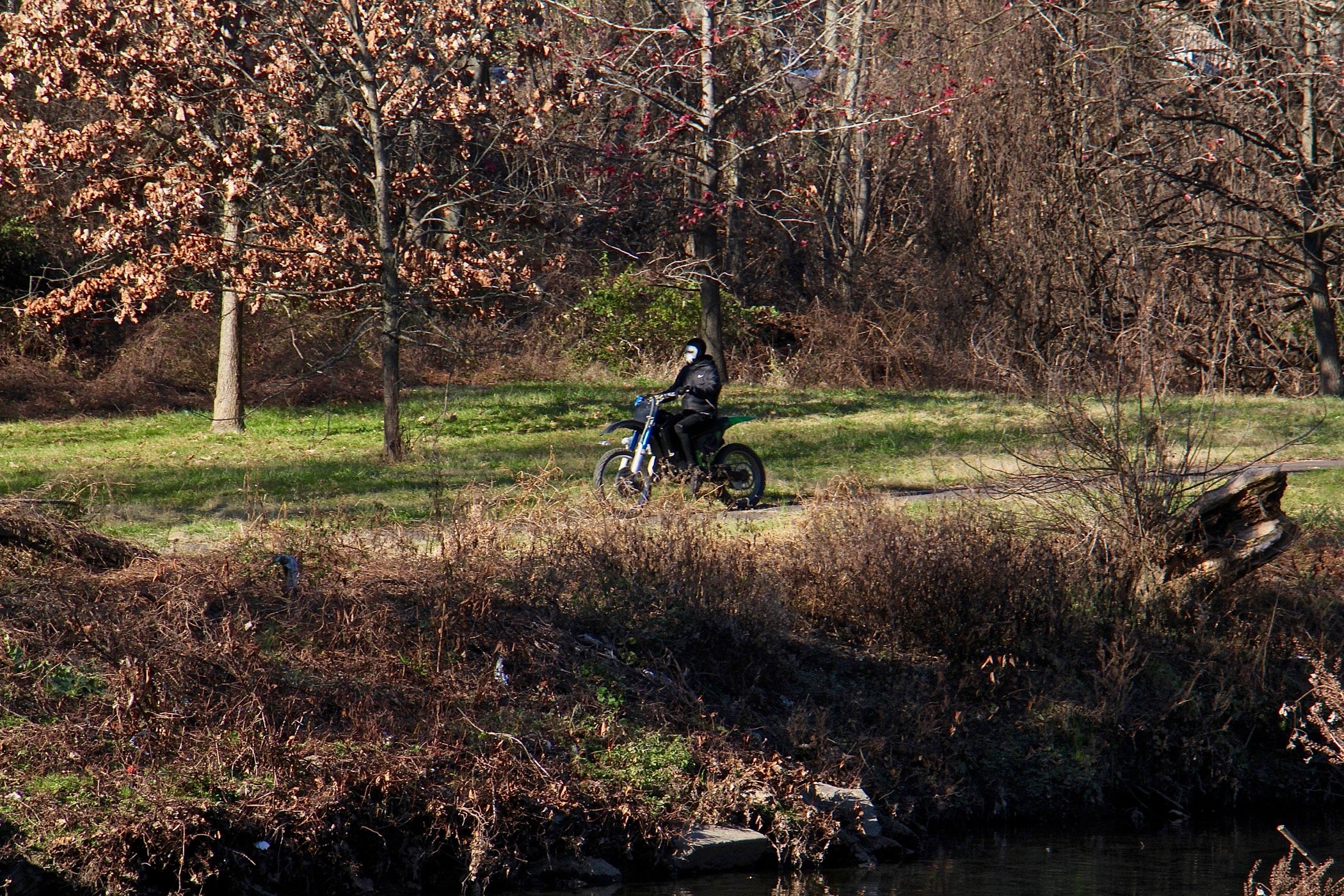
Gibson’s music has patches of turbulence and discord, but always ends on an uplift. As an organist for his congregation at Canaan Baptist Church in Germantown, Gibson tends to resolve on notes of hope and tranquility.
“In a pandemic, you have to live on purpose. If you look at the news long enough … you’re dead already. The world is overtaken,” he said. “We have to have the news, but we can’t live without hope. We can’t live without that moment of silence.”
Gibson walked over a second footbridge near the Adams Avenue overpass. This is where the Tacony Creek turns from placid to babbling as it drops below the city street. The din of traffic overpowers the softer sound of water running over rocks. This is the point of turbulence Gibson mimics in the “Tacony Creek” piano solo.
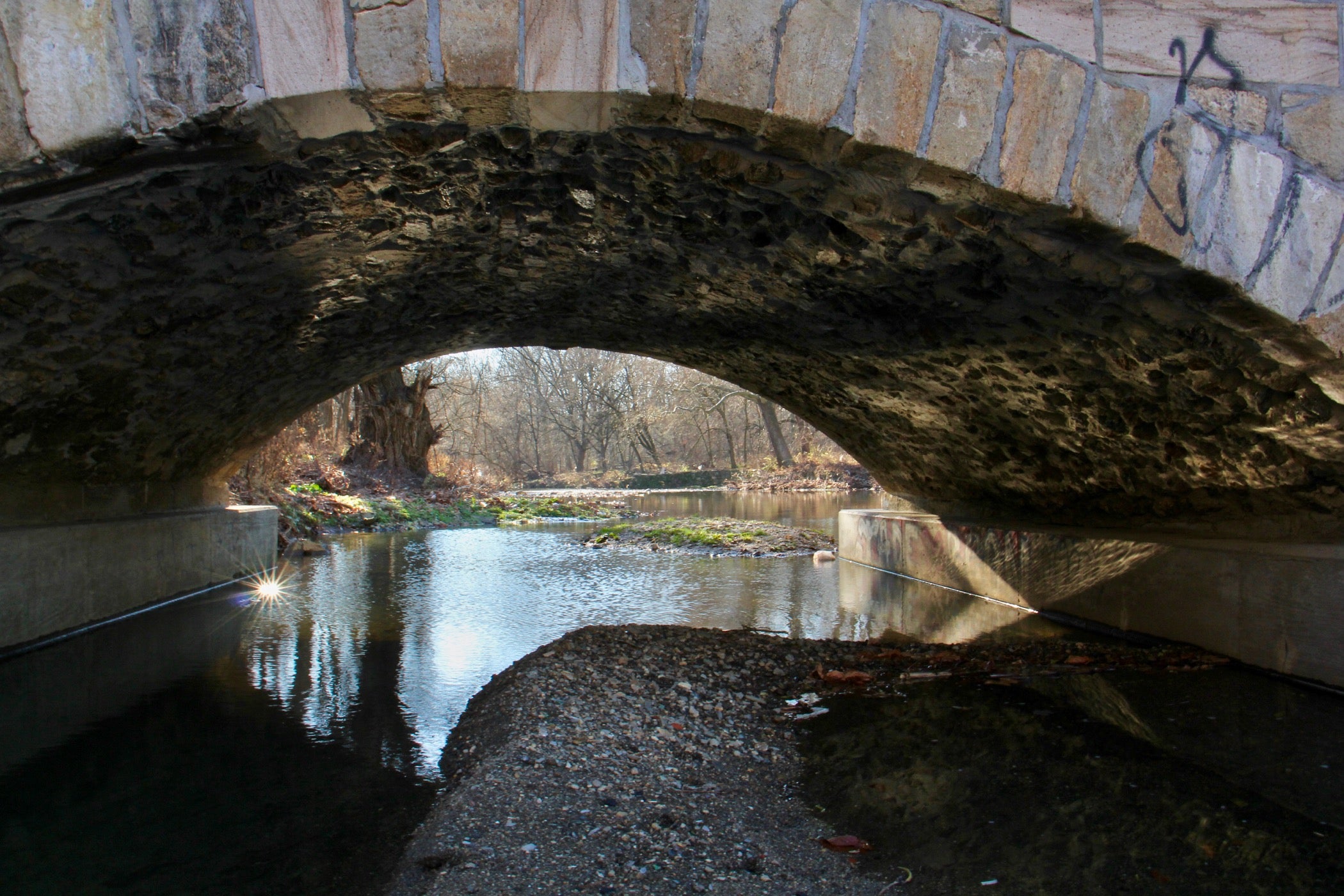
As he turns back to where the walking loop began, Gibson unpacked the spiritual elements he wrote into his song suite.
“Yes, the pandemic is real, but the existence of all that is good is real, too. Which is more real?” he said. “I know y’all think I’m preaching a sermon.”
He paraphrased a passage from the Gospel of Luke, about the necessity of joy during times of hardship.
“There’s a scripture that says, ‘If you don’t cry out with joy, the very rocks will sing and cry out for joy.’ That’s great music to me. It really is,” said Gibson, chuckling and heading back up the embankment to his car. “The sermon’s over.”

Get daily updates from WHYY News!
WHYY is your source for fact-based, in-depth journalism and information. As a nonprofit organization, we rely on financial support from readers like you. Please give today.



